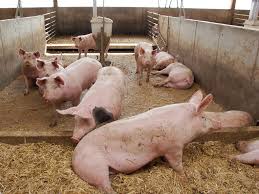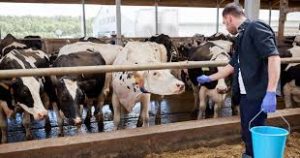The piggery
Introduction to Piggery Farming
Piggery farming, also known as pig farming or hog farming, is the practice of raising domestic pigs for the purpose of producing pork, bacon, and other pork-related products. Pigs are valuable livestock animals that are raised for their meat worldwide, and piggery farming is an important sector of the agricultural industry.
Here are some key points to consider in the introduction to piggery farming:
- Importance of Piggery Farming:
- Piggery farming plays a significant role in meeting the global demand for pork, which is a popular meat consumed in many parts of the world.
- Pigs are known for their high reproductive rate, fast growth rate, and efficient feed conversion, making them a cost-effective source of meat production.
- Pig manure can also be utilized as organic fertilizer for crop production, contributing to sustainable agriculture practices.
- Types of Piggery Farms:
- There are different types of piggery farms based on the scale of operation, such as small-scale, medium-scale, and large-scale farms.
- Small-scale piggery farms typically have a smaller number of pigs and are managed by individual farmers or families.
- Medium and large-scale piggery farms involve more intensive production systems and may be operated as commercial enterprises.
- Housing and Infrastructure:
- Proper housing is essential for the health and well-being of pigs. Piggeries should provide adequate shelter, space, ventilation, and protection from extreme weather conditions.
- Piggery infrastructure may include pig pens, feeders, drinkers, waste management systems, and facilities for handling and processing pigs.
- Breeds and Genetics:
- Different pig breeds are raised for various purposes, such as meat production, breeding, or specialty products like bacon or ham.
- Selecting the right pig breeds based on factors like growth rate, feed efficiency, disease resistance, and market demand is crucial for the success of a piggery farm.
- Feeding and Nutrition:
- Proper nutrition is essential for the growth and development of pigs. A balanced diet that meets the nutritional requirements of pigs at different stages of growth is important.
- Pigs are omnivorous animals and can be fed a variety of feed ingredients, including grains, protein sources, vitamins, and minerals.
- Health Management:
- Disease prevention and control are key aspects of piggery management. Vaccination programs, biosecurity measures, and regular health monitoring are important to prevent the spread of diseases.
- Proper sanitation, hygiene practices, and access to clean water are essential for maintaining the health of pigs and preventing the outbreak of diseases.
- Market and Marketing:
- Understanding market trends, consumer preferences, and pricing is crucial for the success of a piggery farm.
- Developing marketing strategies, building networks with buyers, and ensuring a consistent supply of quality pork products are important for maximizing profitability.
- In conclusion, piggery farming is a rewarding venture that offers opportunities for food production, income generation, and agricultural sustainability. By following best practices in pig management, farmers can achieve success in the piggery industry and contribute to meeting the growing demand for pork products globally.
The City: A Blend of Old and New
As we step onto the cobblestone streets, we’re greeted by the city’s unique blend of old and new. Historical buildings stand side by side with modern architecture, a testament to the city’s evolution over the centuries. The local markets bustle with activity, stalls overflowing with fresh produce, handcrafted goods, and local delicacies. It’s an explosion of colors, sounds, and aromas, a sensory experience that captivates the soul.
Exploring the Historic District
One of the highlights of our journey is a visit to the city’s historic district. Here, we delve deep into the city’s past, exploring ancient ruins, centuries-old monuments, and fascinating museums. We’re not just observers, but active participants in the story of this place, each step bringing a new discovery, a new connection to the people who once walked these streets.
A Taste of the Local Cuisine
Our journey wouldn’t be complete without immersing ourselves in the local cuisine. From traditional street food to gourmet dining experiences, the city’s culinary scene is as diverse as it is delicious. Each meal is a celebration of the city’s culture, a blend of flavors that tells a story of its history and people.
The People: The Heart of the Destination
But the true heart of any destination lies in its people. Throughout our journey, we’ve had the privilege of meeting local artisans, passionate conservationists, and friendly locals who have shared their stories and welcomed us into their community. Their warmth and hospitality remind us that travel is not just about seeing new places, but about forming genuine connections along the way.


